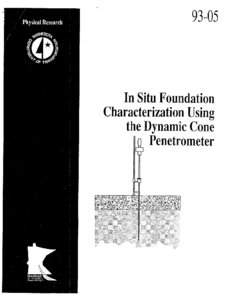Displaying results 1 - 10 of 39
In Situ Foundation Characterization Using the Dynamic Cone Penetrometer
Creator
Date Created
1993-05
Report Number
93-05
Description
2013 MnROAD Construction Report
Creator
Date Created
2014
Report Number
2014-35
Description
Construction Report for a Thin Unbonded Concrete Overlay on Minnesota TH 53
Date Created
2010
Report Number
2010-23
Description
Construction Report for MnROAD Thin Unbonded Concrete Overlay Test Cell 5 (Sub-Cells 105-405)
Creator
Date Created
2010
Report Number
2010-30
Description
Investigation and Assessment of Colored Concrete Pavement
Date Created
2014
Report Number
2014-26
Description










